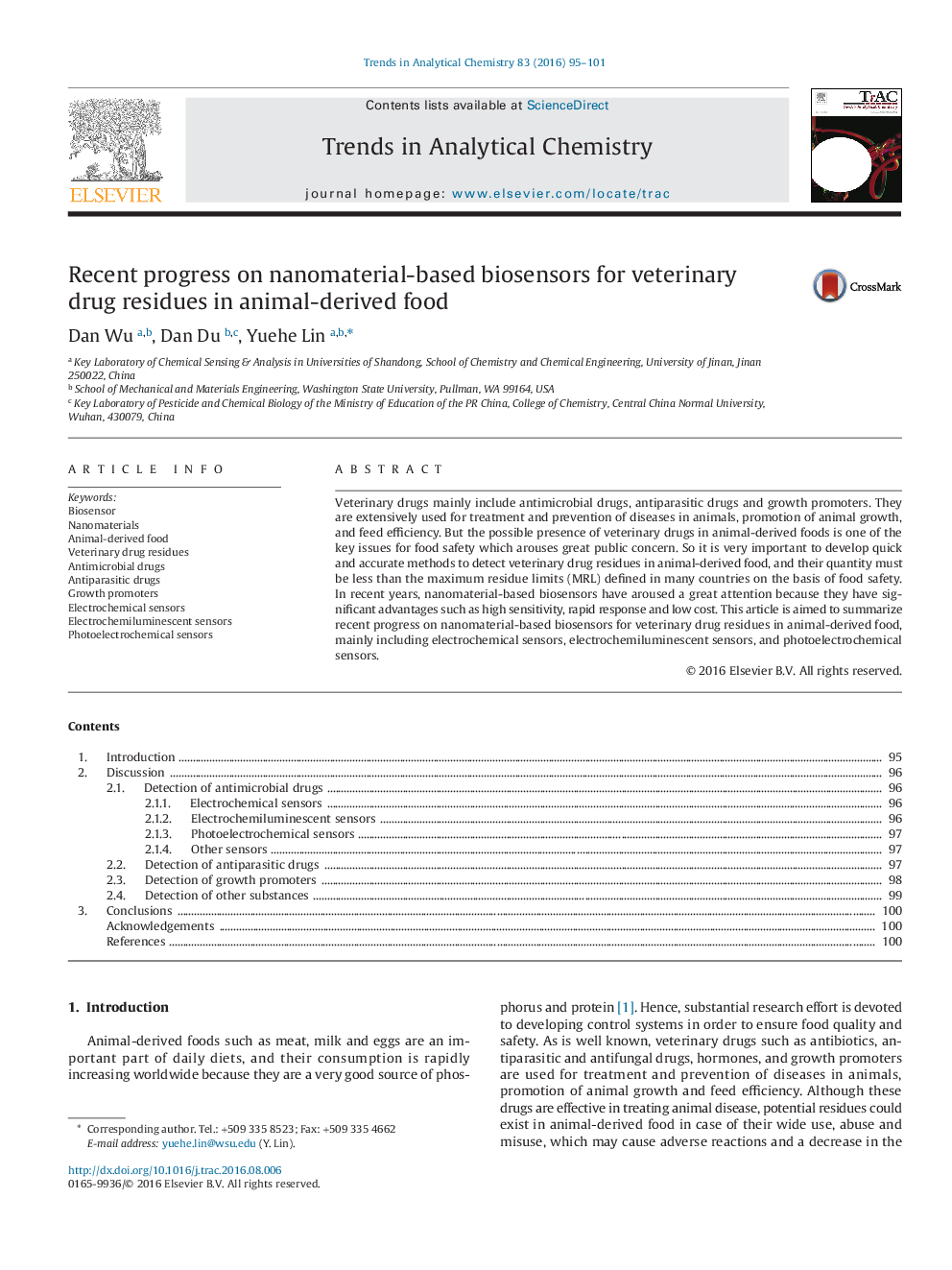| کد مقاله | کد نشریه | سال انتشار | مقاله انگلیسی | نسخه تمام متن |
|---|---|---|---|---|
| 1247713 | 1379093 | 2016 | 7 صفحه PDF | دانلود رایگان |
• Nanomaterial-based biosensors for food safety application are presented.
• Electrochemical sensors, electrochemiluminescent sensors, and photoelectrochemical sensors are reviewed.
• Antimicrobial drugs, antiparasitic drugs, and growth promoters are summarized.
• Future considerations for advancing the use of biosensors are discussed.
Veterinary drugs mainly include antimicrobial drugs, antiparasitic drugs and growth promoters. They are extensively used for treatment and prevention of diseases in animals, promotion of animal growth, and feed efficiency. But the possible presence of veterinary drugs in animal-derived foods is one of the key issues for food safety which arouses great public concern. So it is very important to develop quick and accurate methods to detect veterinary drug residues in animal-derived food, and their quantity must be less than the maximum residue limits (MRL) defined in many countries on the basis of food safety. In recent years, nanomaterial-based biosensors have aroused a great attention because they have significant advantages such as high sensitivity, rapid response and low cost. This article is aimed to summarize recent progress on nanomaterial-based biosensors for veterinary drug residues in animal-derived food, mainly including electrochemical sensors, electrochemiluminescent sensors, and photoelectrochemical sensors.
Journal: TrAC Trends in Analytical Chemistry - Volume 83, Part B, October 2016, Pages 95–101
